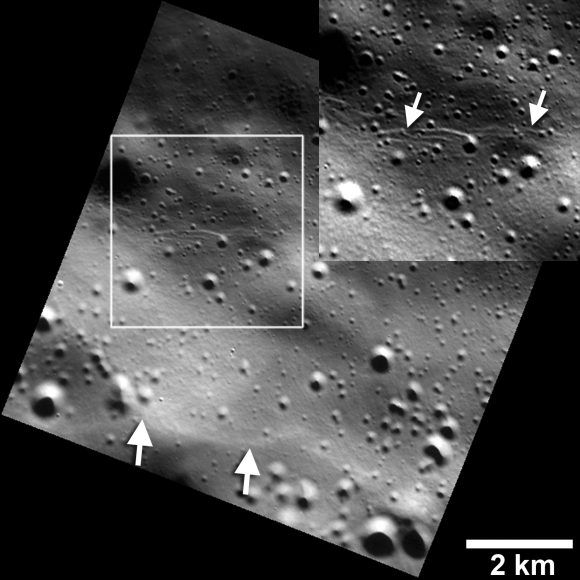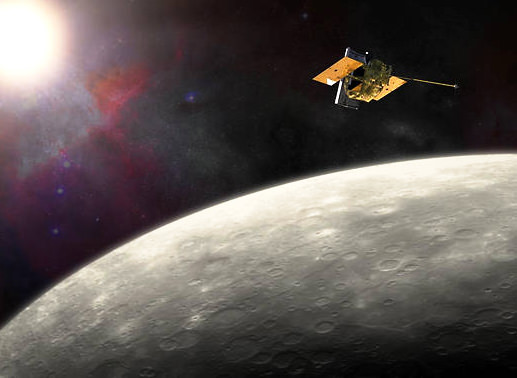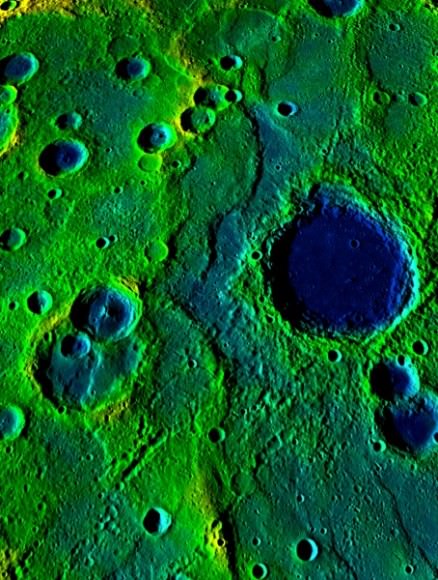Mercury is a fascinating planet. As our Suns’ closest orbiting body, it experiences extremes of heat and cold, has the most eccentric orbit of any Solar planet, and an orbital resonance that makes a single day last as long as two years. But since the arrival of the MESSENGER probe, we have learned some new and interesting things about the planet’s geological history as well.
For example, images that were recently obtained by the NASA spacecraft revealed previously undetected landforms – small fault scarps – that appear to be geologically young. The presence of these features have led scientists to conclude that Mercury is still contracting over time, which means that – like Earth – it is tectonically active.
In geology, fault scarps refer to small step-like formations in the surface of a planet, where one side of a fault has moved vertically relative to the other. Previously, scientists believed that Mercury was tectonically dead, and that all major geological activity had taken place in the planet’s early history.

This was evidenced by features spotted by the MESSENGER and Mariner 10 probes, both of which found evidence of large wrinkle ridges and fault scarps on the surface. The features were reasoned to be the result of Mercury contacting as it cooled early in its history (i.e. billion of years ago).
This action caused the planet’s crust to break, forming cliffs up to a kilometer and a half (about 1 mile) in height and hundreds of kilometers long. However, as the MESSENGER team noted, these small scarps were considerably younger, dating to about 50 million years of age.
They concluded that the scarps would have to be this young in order to survive bombardment by comets and meteoroids, a common occurrence on Mercury. They also noted their resemblance to similar features on the Moon, which also has young scarps that are the result of recent contraction.
The team’s findings were reported in a paper titled “Recent Tectonic Activity on Mercury Revealed by Small Thrust Fault Scarps“, which appeared in the October issue of Nature Geoscience.

As Tom Watters, the Smithsonian senior scientist at the National Air and Space Museum and the lead author of the paper, stated in a NASA press release:
“The young age of the small scarps means that Mercury joins Earth as a tectonically active planet, with new faults likely forming today as Mercury’s interior continues to cool and the planet contracts.”
The findings were made during the last 18 months of the MESSENGER mission, during which time the probe lowered its altitude to get higher-resolution images of the planet’s surface. The findings are also consistent with recent findings about Mercury’s global magnetic field, which appears to be powered by the planet’s slowly-cooling outer core.
As Jim Green, NASA’s Planetary Science Director, said of the discovery:
“This is why we explore. For years, scientists believed that Mercury’s tectonic activity was in the distant past. It’s exciting to consider that this small planet – not much larger than Earth’s moon – is active even today.”
All told, these findings have let scientists know that the planet is still alive, in the geological sense. It also means that that there is likely such as thing as Mercury-quakes, something which NASA is sure to follow up on if and when a lander mission (equipped with seismology instruments) is dispatched to the surface of the planet.
Further Reading: NASA, Nature Geoscience



